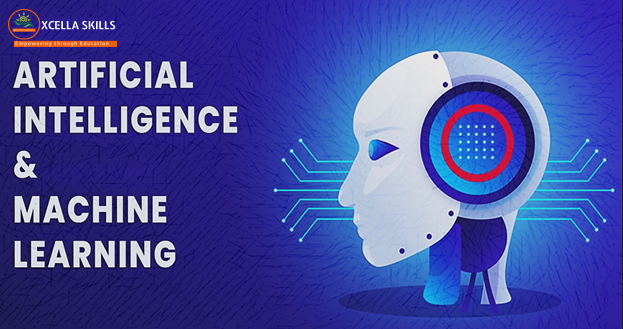
AI and Machine Learning with Python
The Complete Machine Learning & Data Science course is designed to take you from beginner to expert level in machine learning and data science. Get 360-degree learning experience, get hands-on Data Science and ML Learn DS methods and techniques, and acquire analytical skills. Gain practical knowledge and become proficient in Data Science.
Machine learning (ML) is a branch of artificial intelligence (AI) and computer science that focuses on the using data and algorithms to enable AI to imitate the way that humans learn, gradually improving its accuracy.
Data Science and Machine Learning with Python, including Numpy, Pandas, Matplotlib, Scikit-Learn etc.
NumPy for numerical processing with Python.
Pandas for data manipulation with Python
Matplotlib to create fully customized data visualizations with Python.
Seaborn to create beautiful statistical plots with Python
Scikit-learn to apply powerful machine learning algorithms.
NumPy
Numpy Arrays
Coding Exercise Check-in: Creating NumPy Arrays
NumPy Indexing and Selection
Coding Exercise Check-in: Selecting Data from Numpy Array
NumPy Operations
Check-In: Operations on NumPy Array
NumPy Exercises
Pandas
Introduction to Pandas
Series
Labeled Index
DataFrames
Conditional Filtering
Useful Methods
Statistical Information and Sorting
Missing Data
GroupBy Operations
Combining DataFrames - Concatenation
Combining DataFrames - Inner Merge
Combining DataFrames - Left and Right Merge
Combining DataFrames - Outer Merge
Pandas - Text Methods for String Data
Pandas - Time Methods for Date and Time Data
Pandas Input and Output - CSV Files
Pandas Input and Output - HTML Tables
Pandas Input and Output - Excel Files
Pandas Pivot Tables
Matplotlib
Understanding the Figure Object
Implementing Figures and Axes
Figure Parameters
Styling - Legends, Colors
Advanced Matplotlib Commands
Seaborn
Scatterplots
Distribution Plots
Categorical Plots
Comparison Plots
Grid Plots
Seaborn - Matrix Plots
Linear Regression
Ploynomial Regression
Logistic Regression
KNN- K Nearest Neighbour
K-Means Clustering
Tree Based Methods
Random Forests
Boosting Methods
Bayesian Methods
Course Outcomes:
perform statistical analysis of data;
develop the ability to build and assess data-based models.
execute statistical analyses with professional statistical software
Understand a wide variety of learning algorithms
Understand how to evaluate models optimised on data
Understand mathematical and statistical prospectives of machine learning algorithms through python programming.
Design and evaluate the unsupervised models through python in built functions.

